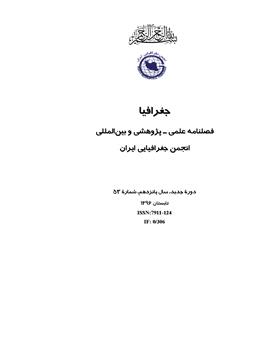تببین فرایند شهرگریزی(couterurbanization) در منطقه کلان شهری اصفهان (Isfahan metropolis area)
محورهای موضوعی :میثم ارگانی 1 , حسین منصوریان 2
1 - تهران
2 - تهران
کلید واژه: شهرنشینی, شهرگریزی, اثربخشی مهاجرت, آمد و شد روزانه, منطقه کلانشهری اصفهان,
چکیده مقاله :
شهرگریزی با تعاریف گوناگون در ادبیات پژوهش مطرح شده و تعریف آن بر افزایش جمعیت شهرهای کوچک (small cities) در فرایند رشد و توسعه شهرها دلالت دارد. در این پژوهش، براساس داده های جمعیتی، مهاجرتی، آمدوشدهای روزانه(commuting) و محرک های مهاجرتی، سعی شده است با بهره گیری از روشی اکتشافی به بررسی پدیده شهرگریزی در منطقه کلانشهری اصفهان پرداخته شود. نتایج نشان می دهد که افزایش جمعیت در طی دورهای مختلف از شهرهای بزرگ به نفع شهرهای کوچک و خارج از محدوده کلانشهری تغییر جهت داده است. به صورتی که در فواصل نزدیک به شهر اصلی رشد جمعیت کمتری در طی دهه اخیر مشاهده می شود. با توجه به مهاجرت و اثربخشی مهاجرت (migration effectiveness)بر جمعیت و همچنین محرک های مهاجرتی در منطقه می توان بیان داشت که عواملی مانند دستیابی به مسکن بهتر و شغل از جمله مهمترین محرک ها در افزایش جمعیت شهرهای کوچک در پیرامون شهر اصلی بوده است. همچنین کاهش آمدوشد روزانه جمعیت با فاصله گرفتن از شهر اصلی نشان می دهد که شهرهای با فاصله گرفتن از شهر مرکزی از استقلال عملکردی بیشتر برخوردارند. همچنین براساس مدل برگشت تمرکز (polarization reversal)و بررسی فرایندهای تحولات جمعیتی در منطقه کلانشهری، تحولات جمعیتی از مرکز به پیرامون مشاهده می شود که در هر دوره به کاهش جمعیت شهر اصلی و افزایش جذب جمعیت در شهرهای کوچک منجر شده است. در مجموع می توان بیان داشت که منطقه کلانشهری اصفهان از یک مرحله شهرنشینی به مرحله شهرگریزی وارد شده است.
Counter-urbanization has been defined with many definitions in research literature as increasing of the small town population in the process of urban expansion and development. This study investigates the counter-urbanization process in Isfahan metropolitan area based on an exploratory method using the population and immigration data, diurnal commuting, and the immigration motivators. The results show that, during different periods, population growth has been changed from the greater cities’ metropolitan area to the small towns. So that, there is less population growth near the main greater cities during the last decade. Regarding the immigration as well as migration effectiveness over the population, and immigration motivators, it can be said that the most important parameters of small towns’ expansion near the greater cities are better habitation opportunities, and finding better jobs. Furthermore, decreasing the diurnal commuting close to the greater cities shows that small towns, which are farther from the greater city, have more autonomy. In addition, based on polarization reversal model, and population development investigation in metropolitan areas, there are population development from the greater cities’ centre to the periphery area, which is leaded to decrease the population of the main greater city, and increase the population absorption in small towns. Consequently, the urbanization of Isfahan metropolitan area has entered to a counter-urbanization phase.
